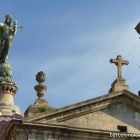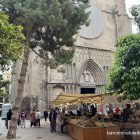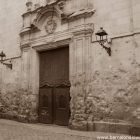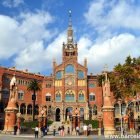The Basilica of Sants Màrtirs Sant Just i Pastor dates back to the fourteenth century and was built on the ruins of a fourth-century church, which was itself built on top of a pagan temple dedicated to the deity Mithras from Greco-Roman mythology.
The church’s plain exterior, typical of Catalan Gothic architecture, belies the beauty of the building’s interior, which includes an imposing altar that houses what is alleged to be the original statue of Our Lady of Montserrat.
Other highlights include a sixteenth-century wooden altarpiece depicting the Passion of Christ, an unusual statue of a pregnant Virgin Mary, and a bell tower offering a panoramic view of the Gothic Quarter.
Outside the basilica, in Plaça de Sant Just, stands one of the oldest fountains in Barcelona.
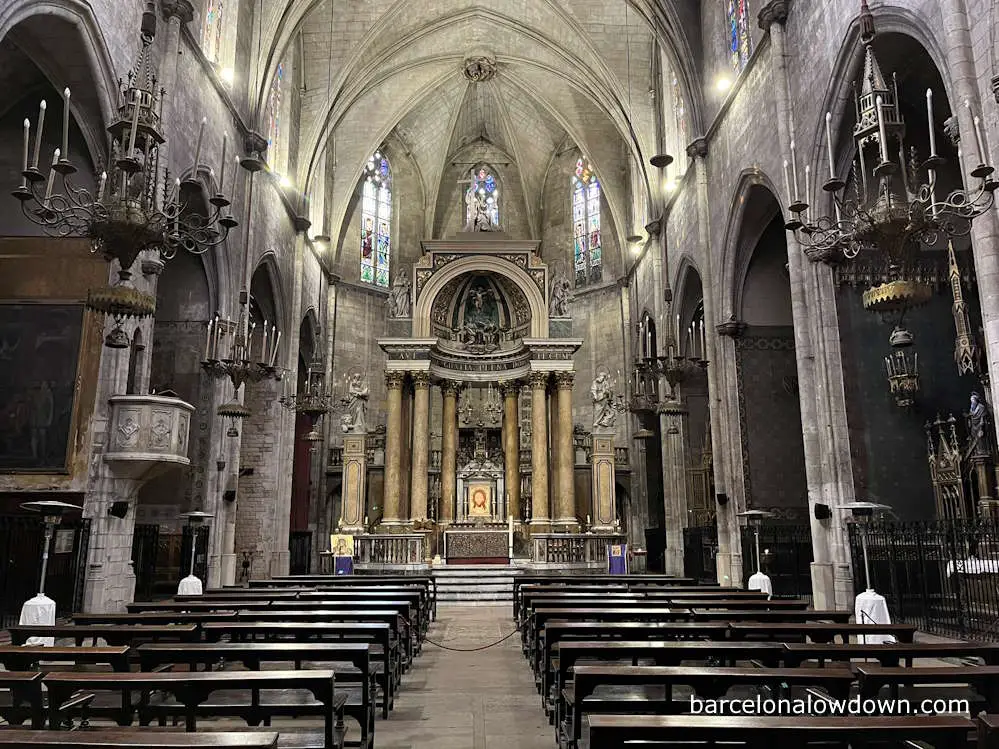
Visiting the Basilica of Sants Màrtirs Sant Just i Pastor
The Basilica of Sants Martirs Sant Just i Pastor is open daily and can be visited free of charge, although this only gives access to the main nave.
I think it’s worth paying a few euros for the Cultural Visit, which gives you access to the bell tower and allows you to see the remains of the Visigoth church, the altarpiece, and the statue of Our Lady of Montserrat up close.
During our visit, the person selling tickets was kind enough to give us a tour of the church and explain the various points of interest. However, I got the impression that his official role was only to unlock the tower door and switch on the lights and that we were lucky to have the place to ourselves.
What to See in the Basilica of Sants Màrtirs Sant Just i Pastor
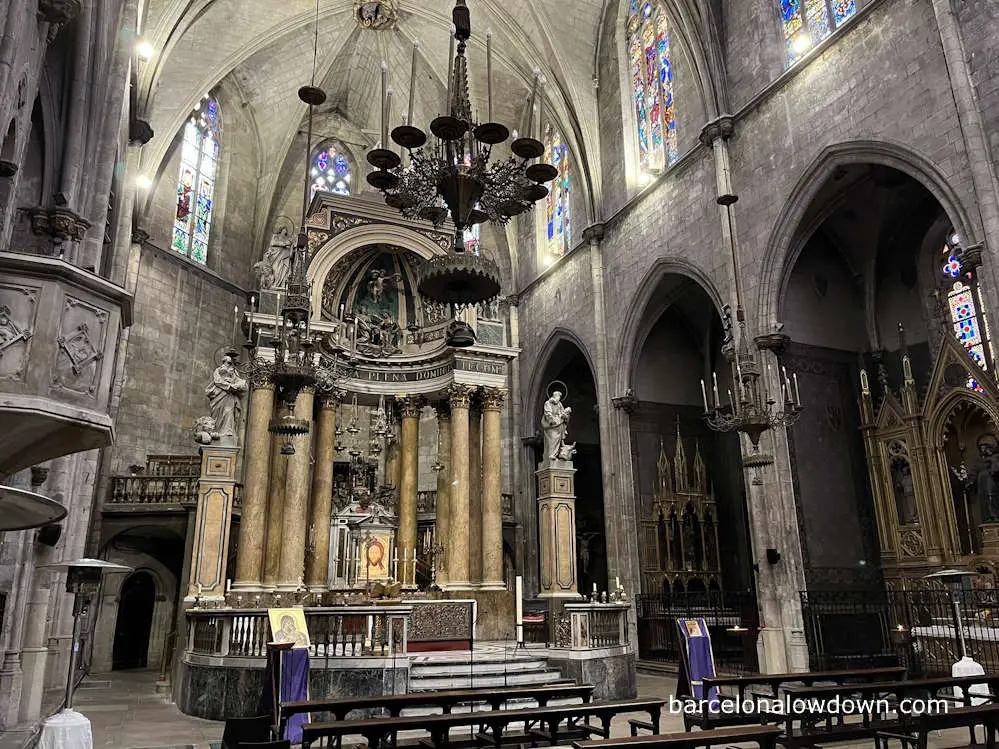
The main nave and side chapels
The basilica consists of a large vaulted nave flanked by twelve side chapels decorated using funds provided by noble families. The most notable of the side chapels features an altarpiece portraying the Passion of Christ painted by Pedro Nunyes between 1525 and 1530.
The belltower and rooftops
The bell tower entrance is to the left of the main entrance, beside the ticket desk. A spiral staircase leads up to the rooftops, from which you can enjoy panoramic views of Plaça de Sant Just and the Gothic Quarter.
The stairs leading up the tower are steep and narrow. About halfway up, there is a small room where some of the church’s silverware is displayed.
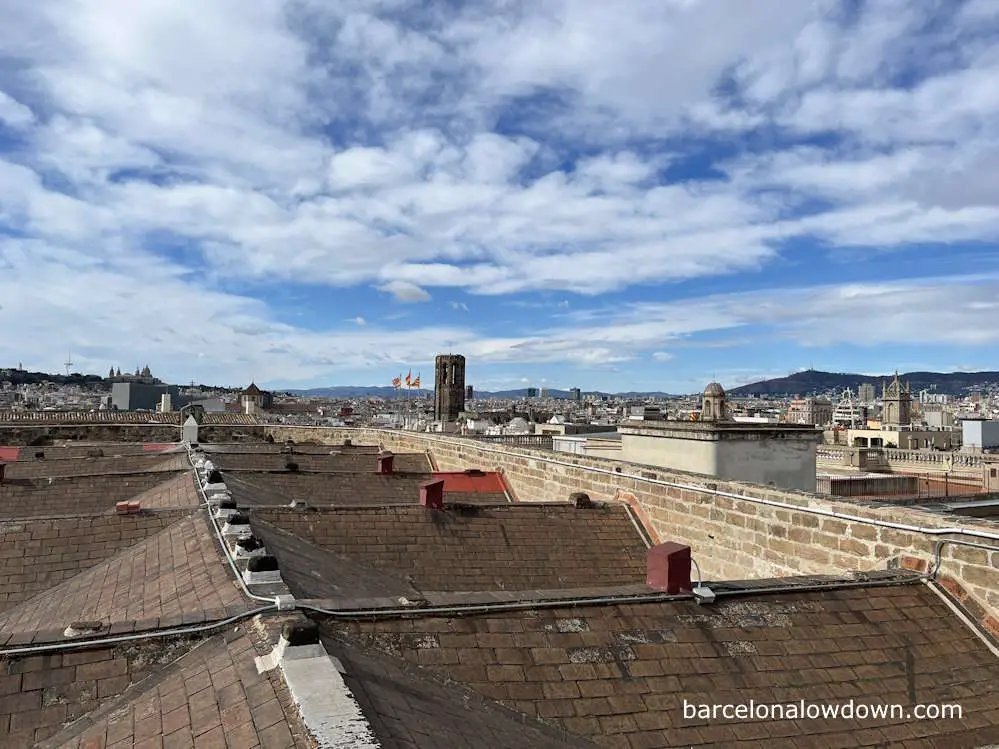
The remains of the Visigoth church
As I mentioned earlier, the Gothic Basilica was built on the site of an earlier Visigoth church. Some parts of the original church, such as the baptistery, a section of the original apse, and the remnants of a tomb that may have belonged to King Wittiza, have been excavated and are on display.
The fonts
The basilica has two fonts on either side of the entrance, made from the capitals of columns recovered from the original church.
The Altar
The most impressive part of the church’s interior is, without doubt, the large neo-classical altar, which features a triumphal arch supported by twelve marble columns and a statue of Our Lady of Montserrat.
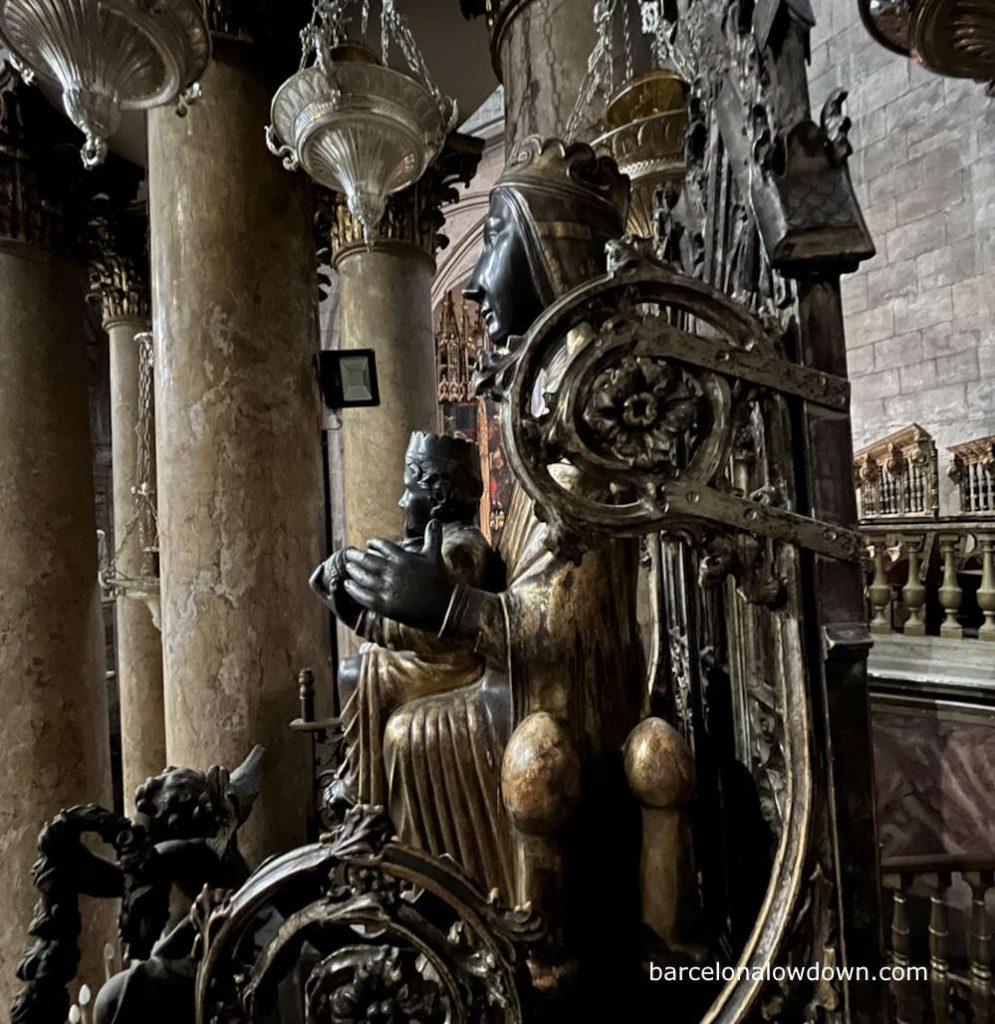
The Legend of Our Lady of Montserrat
Our Lady of Montserrat is a holy statue of the Madonna and Child said to have been carved in Jerusalem by Saint Luke in the first century AD.
According to the legend, the statue was brought to Barcelona by Saint Paul during the fourth Century when she was entrusted to the Basilica of Sants Màrtis Sant Just i Pastor, one of the few Christian temples in Barcelona at that time.
The statue remained in the basilica until the eighth century when Barcelona was attacked by the Caliphate of Córdoba. Fearing that the statue might be stolen or destroyed, the Bishop of Barcelona decided to take La Moreneta, as the statue is known locally, and hide her in the mountains outside Barcelona.
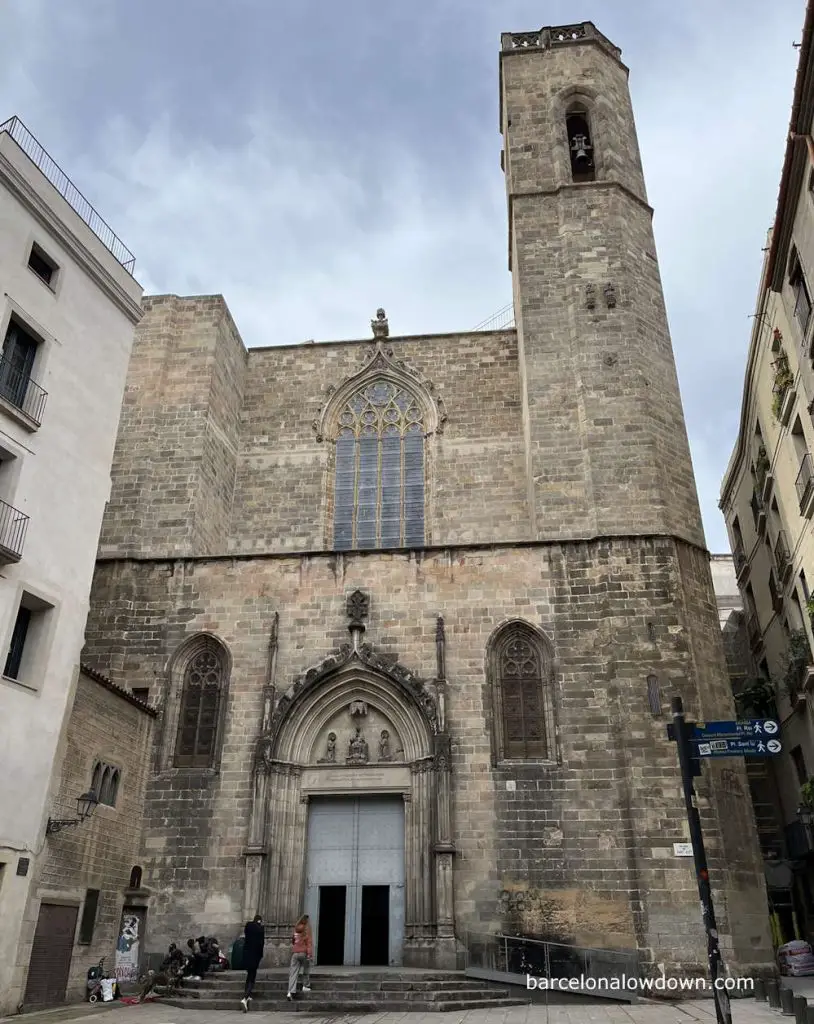
The bishop travelled alone, accompanied only by an army captain. When the pair arrived at Montserrat, about fifty kilometres northwest of Barcelona, they saw a colourful bird. The bird led them to a cave on the mountainside, where the bishop decided to hide the statue.
Unfortunately, during the return journey back to Barcelona, the men were attacked and killed by enemy troops, and since they hadn’t told anyone where they were going to hide the holy statue, La Moreneta was lost and eventually forgotten.
Approximately a hundred years later, in 880 AD, a group of young shepherd boys saw a bright light shining from a cave on the mountain’s lower slopes. At first, they didn’t pay much attention to it, but when the light continued for several consecutive nights, they told the vicar of Monistrol de Montserrat.
At this point, the local clergy, headed by the bishop of Vic, got involved and decided to move La Moreneta to Manresa. However, when they tried to move the statue, it became so heavy that it couldn’t be lifted.
Finally, it was decided to leave the statue where it was and build a chapel covering the entrance to the cave.
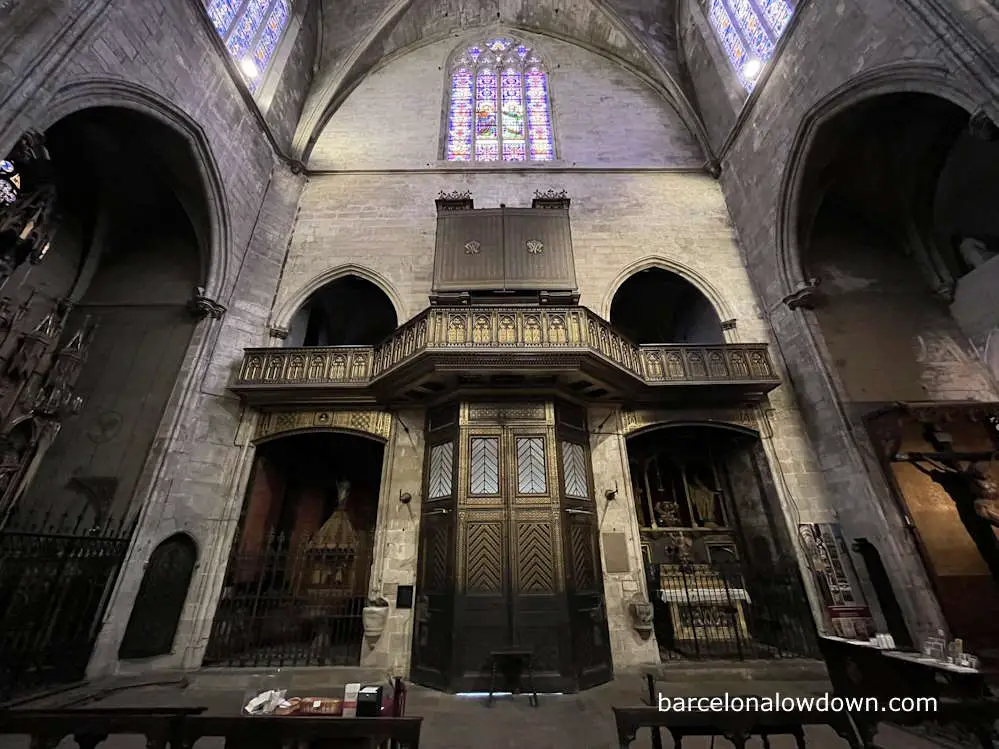
The chapel soon became a place of pilgrimage, and during the eleventh century, an abbey was built nearby, and Our Lady of Montserrat was transferred to the basilica, where she remained for more than six centuries.
During the eighteenth century, Catalunya came under French occupation during the Peninsular War. During this time, the statue was returned to Barcelona, where it remained hidden for approximately two years before returning to Montserrat.
Then, in 1936, after the onset of the Spanish Civil War, the statue was replaced by a twelfth-century replica and the original carving returned to the Basilica of Sants Màrtirs Sant Just i Pastor, where it remains to this day. [source]
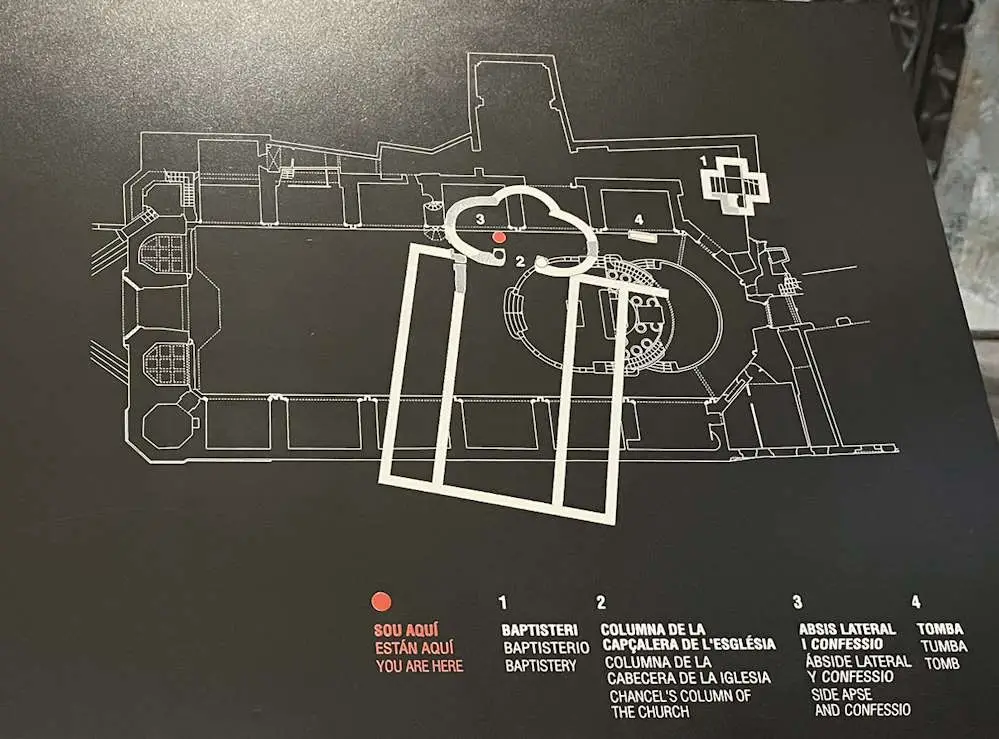
Practical information for visitors
Time needed to visit
You should allow between fifteen minutes and half an hour to visit the church, including the rooftop.
Information in English?
There’s not much information inside the church, but a couple of notice boards include English translations.
Opening times and prices
The nave of the basilica can be visited free of charge at the following times:
| Day | Schedule* |
| Monday, Thursday and Friday | 10:00 – 20:30 |
| Tuesday & Wednesday | 10:00 – 18:00 |
| Saturday | 11:00 – 20:30 |
| Sunday | 10:00 – 13:00 |
The bell tower is open at the following times:
| Day | Schedule* |
| Monday to Friday | 10:00 – 13:00 |
| Saturday | 11:00 – 13:00 |
*Times may vary due to religious celebrations and holidays.
Guided tours of the basilica are available from Monday to Friday and must be organized in advance via email. visitsantjust@gmail.com
Tickets
| Ticket | Price |
| Entry to the nave | FREE |
| Entry to the nave plus bell tower | €3 |
| Cultural visit (nave plus bell tower, black Madonna and remains of the Romanic church) | €5 |
| Guided tour in Spanish or Catalan | €10 |
Location
The Basilica is in the heart of the Gothic Quarter, close to Plaça de Sant Jaume and Barcelona City Hall.
Address: Plaça de Sant Just, s/n, Barcelona
How to get there
The nearest metro station is Jaume I on Line 4 (the yellow line).
You could also visit the basilica as part of my free self-guided walking tour of Barcelona’s Gothic Quarter.
Other attractions nearby
- The fountain of Sant Just
- Barcelona City Hall
- Barcelona’s Jewish Quarter
- Barcelona History Museum
- Barcelona Cathedral
Map
Plaça de Sant Just, s/n, Barcelona

